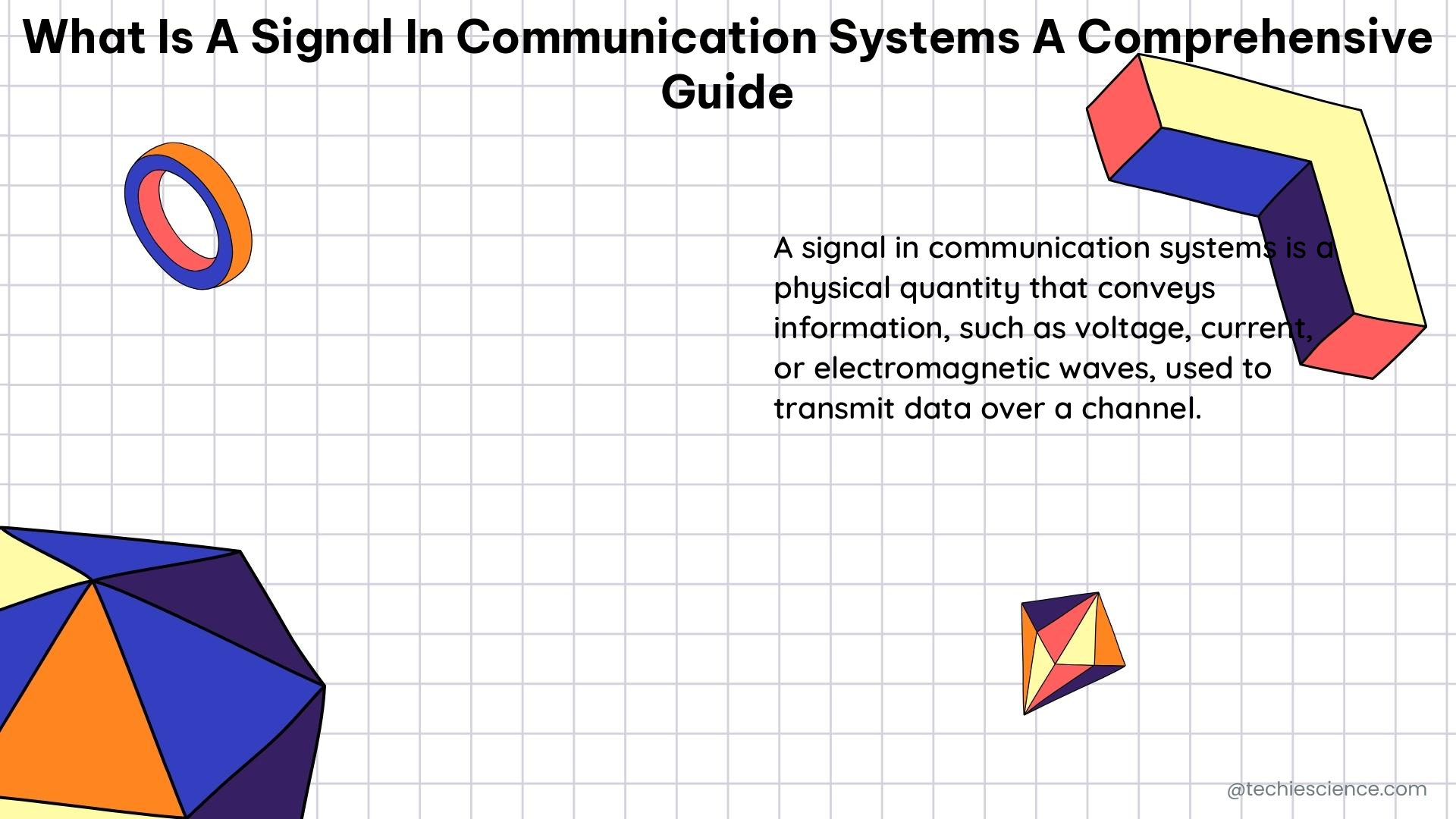A signal in communication systems refers to any type of information that is transmitted from one point to another, including data, voice, video, or any other type of information that needs to be communicated. Signals can be analog or digital and can be transmitted over a variety of different mediums, including wired and wireless channels.
Understanding Signals in Communication Systems
To understand signals in communication systems, it is essential to grasp the basic concepts of data communications. Data communications involves the transfer of data between two or more devices over a communication channel. This channel can be wired, such as a copper wire or an optical fiber, or it can be wireless, such as radio waves or infrared signals.
Baud Rate
The baud rate is a measure of the signaling rate at which data is sent through a channel and is measured in electrical transitions per second. In the EIA232 serial interface standard, one signal transition, at most, occurs per bit, and the baud rate and bit rate are identical. However, in other coding schemes, such as non-return-to-zero coding, two electrical transitions may be required for each bit, resulting in a lower bit rate.
Channel Efficiency
Channel efficiency is a measure of the number of bits of useful information passed through the channel per second, and it does not include framing, formatting, and error-detecting bits that may be added to the information bits before a message is transmitted. The data rate of a channel is often specified by its bit rate, but an equivalent measure of channel capacity is bandwidth, which is directly proportional to the channel’s bandwidth and inversely proportional to the channel’s noise.
Communications Protocols
In order to transmit signals over a communication channel, a communications protocol is used. A communications protocol is an agreed-upon convention that defines the order and meaning of bits in a serial transmission and may also specify a procedure for exchanging messages. A protocol will define how many data bits compose a message unit, the framing and formatting bits, any error-detecting bits that may be added, and other information that governs control of the communications hardware.
Signal Processing in Data Science

Signal processing is a fundamental component of data science, and it is used to extract valuable insights from complex data in various industries. Signal processing includes a wide range of techniques, each tailored to specific types of data and problems. Understanding the nature of the data and the objectives of the analysis is essential in selecting the appropriate techniques.
Time-Series Data Analysis
For time-series data, techniques like Fourier Transform and auto-correlation are useful for frequency and pattern analysis. The Fourier Transform decomposes a time-domain signal into its constituent frequencies, allowing for the identification of dominant frequencies and patterns in the data. Auto-correlation, on the other hand, measures the similarity of a signal with a delayed version of itself, revealing periodic patterns and trends.
Spectral Analysis
Spectral analysis is another important signal processing technique used in data science. It involves the decomposition of a signal into its frequency components, providing insights into the underlying structure and dynamics of the data. This can be particularly useful in applications such as audio processing, vibration analysis, and image processing.
Filtering and Noise Reduction
Signal processing techniques can also be used for filtering and noise reduction. Filters, such as low-pass, high-pass, and band-pass filters, can be applied to remove unwanted frequency components from a signal, improving the signal-to-noise ratio and enhancing the quality of the data. This is crucial in many applications, such as speech recognition, image enhancement, and sensor data analysis.
Conclusion
Signals in communication systems are the fundamental building blocks of data transmission and processing. Understanding the concepts of baud rate, channel efficiency, and communications protocols is essential for designing and optimizing communication systems. Furthermore, signal processing techniques play a crucial role in data science, enabling the extraction of valuable insights from complex data across a wide range of industries.
References:
- Signal. (2021). Signal still knows nothing about you, but the government keeps asking. Retrieved from https://signal.org/bigbrother/
- Reddit. (2021). What communications protocol does signal messenger use? Retrieved from https://www.reddit.com/r/signal/comments/rsjsuc/what_communications_protocol_does_signal/
- CAMI Research. (2016). Data Communications Basics | A Reference Guide. Retrieved from https://www.camiresearch.com/Data_Com_Basics/data_com_tutorial.html
- DataCamp. (n.d.). A Data Scientist’s Guide to Signal Processing. Retrieved from https://www.datacamp.com/tutorial/a-data-scientists-guide-to-signal-processing
- Signal. (n.d.). Documentation. Retrieved from https://signal.org/docs/

The lambdageeks.com Core SME Team is a group of experienced subject matter experts from diverse scientific and technical fields including Physics, Chemistry, Technology,Electronics & Electrical Engineering, Automotive, Mechanical Engineering. Our team collaborates to create high-quality, well-researched articles on a wide range of science and technology topics for the lambdageeks.com website.
All Our Senior SME are having more than 7 Years of experience in the respective fields . They are either Working Industry Professionals or assocaited With different Universities. Refer Our Authors Page to get to know About our Core SMEs.